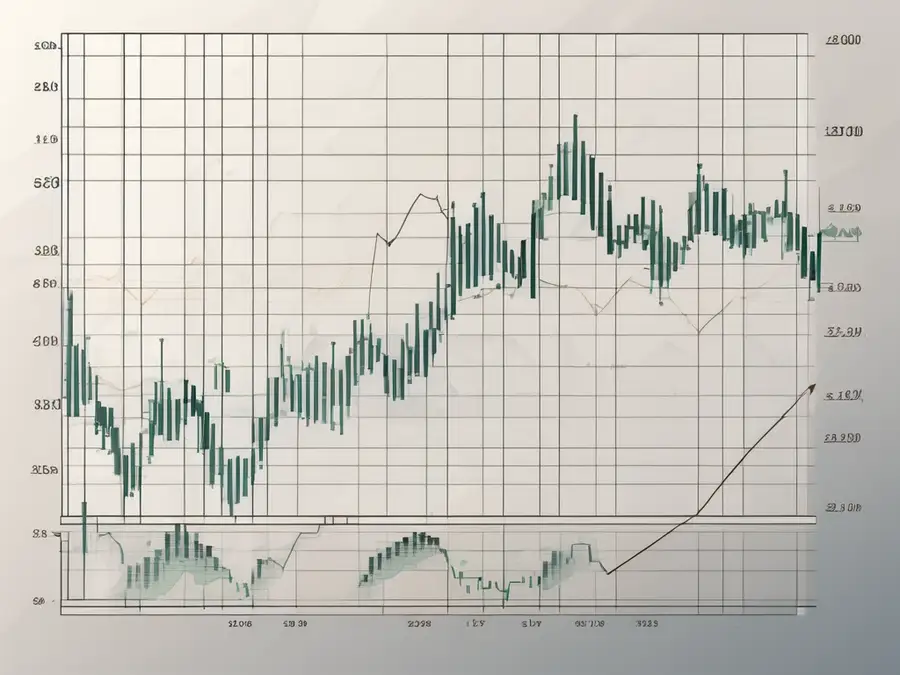The Rise of Tokenized Investing: A Game-Changer in the Financial World

In recent years, the financial industry has witnessed a revolutionary development that is set to transform the way we invest and transact. Welcome to the era of tokenized investing, a game-changing concept that is revolutionizing the financial world. In this article, we will explore the fundamentals of tokenized investing, its evolution over time, its impact on the financial landscape, and the benefits it brings. We will also discuss the challenges and risks associated with this innovative approach.
Understanding the Concept of Tokenized Investing
Before delving into the specifics, let's start by understanding what tokenized investing is all about. At its core, tokenized investing involves the creation of digital tokens that represent ownership or value in a particular asset. These tokens are built on blockchain technology, which ensures transparency, security, and immutability.
Tokenized investing opens up a world of opportunities for investors. It allows fractional ownership of assets, making it accessible to a broader range of individuals. By breaking down assets into smaller units, tokenization eliminates barriers to entry and enables greater liquidity in the market.
The Basics of Tokenization
Tokenization involves the process of converting real-world assets, such as real estate, art, or commodities, into digital tokens. These tokens can then be bought, sold, and traded on various platforms. The tokens are typically issued on blockchain networks, ensuring that transactions are transparent, verifiable, and tamper-proof.
This innovative approach to investing provides flexibility, as investors can choose to invest in specific fractions of an asset instead of buying the entire asset. Moreover, tokenization allows for the seamless transfer of ownership, reducing the need for intermediaries and lowering transaction costs.
The Role of Blockchain in Tokenization
Blockchain technology plays a crucial role in the tokenization process. It acts as a decentralized ledger that records and verifies transactions securely and transparently. Blockchain's distributed nature ensures that no single entity has control over the system, making it resistant to fraud and manipulation.
By leveraging blockchain, tokenized investing eliminates the need for intermediaries, such as brokers or clearinghouses, reducing costs and increasing efficiency. Additionally, the use of smart contracts on the blockchain automates the execution of agreements, streamlining the investment process.
The Evolution of Tokenized Investing
Tokenized investing may seem like a novel concept, but it has been evolving over time. Let's explore its early stages and how it has progressed to the present day.
The Early Stages of Tokenization in Finance
The concept of tokenization first gained prominence with the advent of cryptocurrencies, such as Bitcoin, which introduced the idea of digital assets. Initially, tokenization was primarily associated with the blockchain-based creation of cryptocurrencies.
However, as blockchain technology matured, financial innovators began recognizing its potential beyond cryptocurrencies. They saw an opportunity to tokenize traditional assets, such as real estate, stocks, and commodities, bringing liquidity and accessibility to previously illiquid markets.
The Current State of Tokenized Investing
Fast forward to the present day, and tokenized investing has gained significant traction. Various platforms and exchanges have emerged, offering a wide range of tokenized assets for investors to choose from.
Real estate tokenization, for example, has become increasingly popular. Investors can now own fractions of high-value properties, previously out of reach for many. This democratization of real estate investment is unlocking new opportunities for both small and large investors alike.
The Impact of Tokenized Investing on the Financial World
Tokenized investing is not just a passing trend; it has the potential to reshape the entire financial landscape. Let's explore some of the ways in which tokenization is making its mark.
How Tokenization is Changing Investment Strategies
Traditionally, investing in certain asset classes, such as real estate or fine art, required a significant amount of capital. Tokenization allows investors to diversify their portfolios by gaining exposure to these assets with smaller investments.
Furthermore, tokenized assets can be traded 24/7, unlike traditional markets that operate within specific hours. This accessibility and flexibility enable investors to respond quickly to market conditions and seize investment opportunities in real-time.
The Influence of Tokenization on Global Financial Markets
Tokenization has the potential to foster greater efficiency, transparency, and inclusivity in global financial markets. By removing intermediaries and reducing transaction costs, tokenized investing empowers individuals who were previously excluded from traditional investment avenues.
Moreover, tokenization has the potential to unlock trillions of dollars in currently illiquid assets, bringing them into the mainstream financial ecosystem. This liquidity injection could revitalize markets and spur economic growth.
The Benefits of Tokenized Investing
Tokenized investing comes with a host of benefits that traditional investment approaches struggle to match. Let's explore some of these advantages.
Increased Accessibility and Liquidity
Tokenization allows investors, regardless of their financial status, to gain exposure to previously inaccessible assets. Investing in fractions of high-value assets allows for greater diversification and reduces the risk of a single investment.
Additionally, tokenization brings liquidity to traditionally illiquid markets. Investors can easily buy and sell tokenized assets, ensuring that their investments are not tied up for extended periods.
Enhanced Security and Transparency
Blockchain technology ensures that tokenized investments are secure and transparent. The decentralized nature of blockchain makes it resistant to hacking or fraud, giving investors peace of mind.
Additionally, the transparent nature of blockchain allows investors to gain insights into the underlying asset's history, transaction records, and ownership. This transparency enhances trust in the investment process, attracting more participants to the market.
The Challenges and Risks of Tokenized Investing
While tokenized investing offers numerous benefits, it is not without its challenges and risks. Let's explore some of the key considerations.
Regulatory and Legal Concerns
As with any emerging technology, regulatory frameworks surrounding tokenized investing are still developing. Governments and regulatory bodies are grappling with how to oversee these digital assets and ensure investor protection.
Investors need to navigate the legal nuances associated with tokenized assets to ensure compliance with local regulations. It is crucial for investors to educate themselves on the legal aspects and seek professional advice when necessary.
Technological Risks and Challenges
While blockchain technology offers robust security, it is not entirely immune to vulnerabilities. Smart contract bugs or vulnerabilities in the underlying technology could have severe implications for tokenized investments.
Investors must be aware of the technological risks and conduct due diligence when selecting platforms or exchanges to transact on. Staying informed and proactive is key to mitigating these challenges.
Personal Advice: As an expert in tokenized investing, I advise investors to approach this innovative space with caution and a thorough understanding of the risks involved. While tokenization brings exciting opportunities, it is crucial to conduct proper due diligence, seek professional advice, and stay abreast of regulatory developments.
FAQ: Revisiting the Main Points
What is tokenized investing?
Tokenized investing involves the creation of digital tokens that represent ownership or value in a particular asset. These tokens are built on blockchain technology, ensuring transparency, security, and immutability.
How does tokenization work?
Tokenization involves the process of converting real-world assets into digital tokens. These tokens can then be bought, sold, and traded on various platforms. The use of blockchain technology ensures transparency, security, and efficient transactions.
What are the benefits of tokenized investing?
Tokenized investing offers increased accessibility and liquidity, allowing investors to gain exposure to previously inaccessible assets. It also brings enhanced security and transparency, thanks to blockchain technology.
What are the challenges and risks associated with tokenized investing?
Some challenges and risks include regulatory and legal concerns as governments strive to develop frameworks for digital assets. Additionally, technological risks, such as smart contract bugs or vulnerabilities, need to be considered.
In conclusion, tokenized investing is a game-changer in the financial world. Its ability to democratize investment opportunities, increase liquidity, and enhance security is transforming the way we invest. While challenges and risks exist, a cautious and informed approach can help individuals navigate this exciting new landscape.
Ready to embrace the future of investing? Join Morpher today and experience the cutting-edge of tokenized investing. With zero fees, infinite liquidity, and the ability to trade across a multitude of asset classes, Morpher.com is the platform that's democratizing trading for everyone, everywhere. Whether you're interested in fractional investing, short selling without interest fees, or leveraging up to 10x on your trades, Morpher offers a unique and flexible trading experience on the Ethereum Blockchain. Sign up now to take control of your investments with the Morpher Wallet and receive your free sign-up bonus. Sign Up and Get Your Free Sign Up Bonus and start your journey towards a more innovative and user-centric trading experience.

Disclaimer: All investments involve risk, and the past performance of a security, industry, sector, market, financial product, trading strategy, or individual’s trading does not guarantee future results or returns. Investors are fully responsible for any investment decisions they make. Such decisions should be based solely on an evaluation of their financial circumstances, investment objectives, risk tolerance, and liquidity needs. This post does not constitute investment advice.

Painless trading for everyone
Hundreds of markets all in one place - Apple, Bitcoin, Gold, Watches, NFTs, Sneakers and so much more.

Painless trading for everyone
Hundreds of markets all in one place - Apple, Bitcoin, Gold, Watches, NFTs, Sneakers and so much more.









